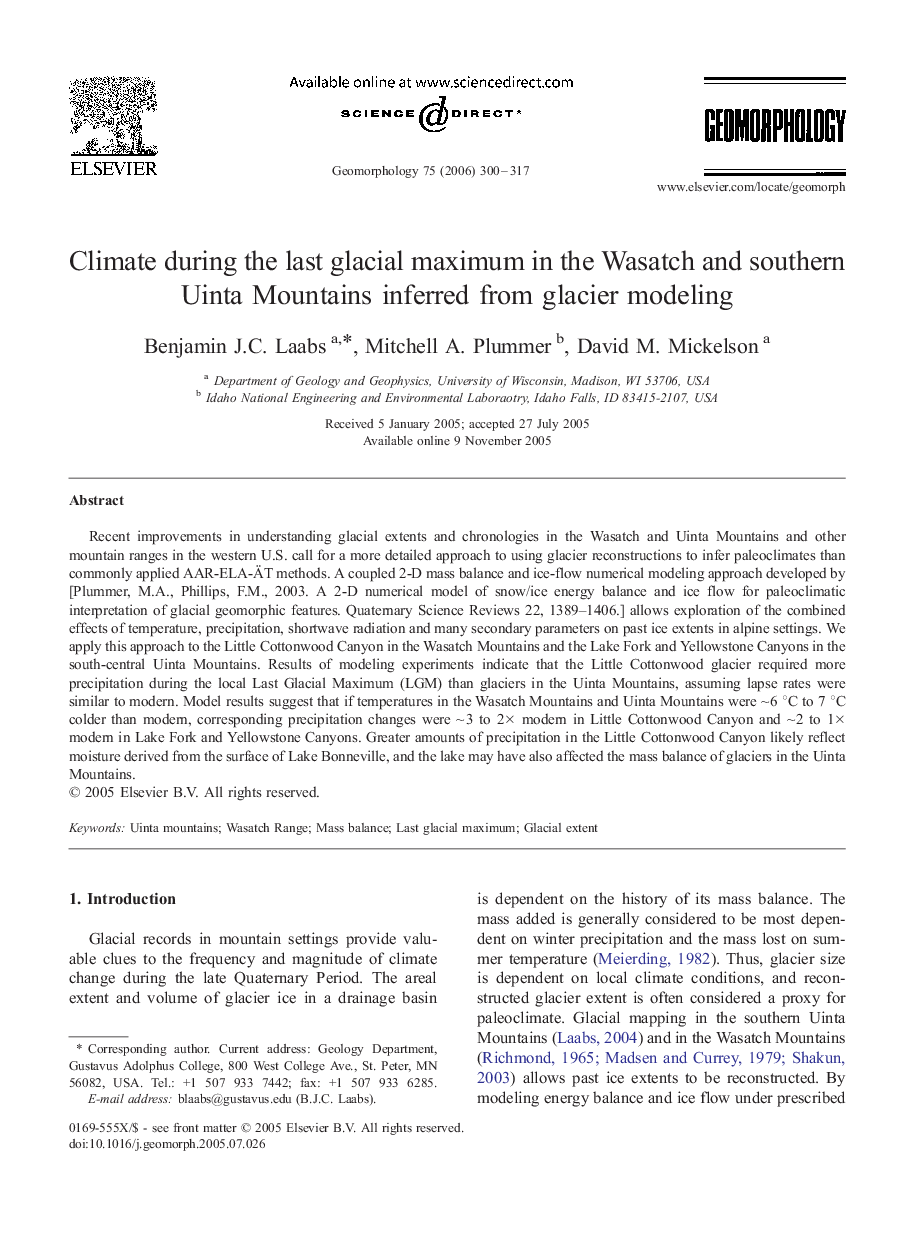| Article ID | Journal | Published Year | Pages | File Type |
|---|---|---|---|---|
| 4687603 | Geomorphology | 2006 | 18 Pages |
Recent improvements in understanding glacial extents and chronologies in the Wasatch and Uinta Mountains and other mountain ranges in the western U.S. call for a more detailed approach to using glacier reconstructions to infer paleoclimates than commonly applied AAR-ELA-ÄT methods. A coupled 2-D mass balance and ice-flow numerical modeling approach developed by [Plummer, M.A., Phillips, F.M., 2003. A 2-D numerical model of snow/ice energy balance and ice flow for paleoclimatic interpretation of glacial geomorphic features. Quaternary Science Reviews 22, 1389–1406] allows exploration of the combined effects of temperature, precipitation, shortwave radiation and many secondary parameters on past ice extents in alpine settings. We apply this approach to the Little Cottonwood Canyon in the Wasatch Mountains and the Lake Fork and Yellowstone Canyons in the south-central Uinta Mountains. Results of modeling experiments indicate that the Little Cottonwood glacier required more precipitation during the local Last Glacial Maximum (LGM) than glaciers in the Uinta Mountains, assuming lapse rates were similar to modern. Model results suggest that if temperatures in the Wasatch Mountains and Uinta Mountains were ∼ 6 °C to 7 °C colder than modern, corresponding precipitation changes were ∼ 3 to 2× modern in Little Cottonwood Canyon and ∼ 2 to 1× modern in Lake Fork and Yellowstone Canyons. Greater amounts of precipitation in the Little Cottonwood Canyon likely reflect moisture derived from the surface of Lake Bonneville, and the lake may have also affected the mass balance of glaciers in the Uinta Mountains.
